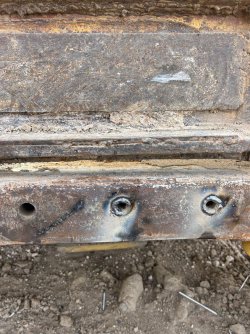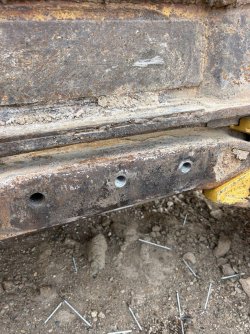Please explain your reasoning.Even if you are able to clean up those threads, I think you're going to reduce your bearing surface to the point I wouldn't trust it.
In this case, the galling transferred material from the barrel tenon and "filled in" the female receiver threads.
I see no problem with using a bottoming tap and plenty of cutting oil to try to chase the threads, with a lot of backing in/out as the excess material is removed.
The only difference between single-pointing and using a tap is that the tap will follow the factory-cut threads. This is a hunting rifle, not a precision target stick. OP has given no indication that there were any issues with the receiver that would justify the cost of blueprinting it- which is what I would insist on doing if I were to do the work as the setup needed to single-point is the bulk of the time/cost; no reason to half-*** it when you're set up for it.


